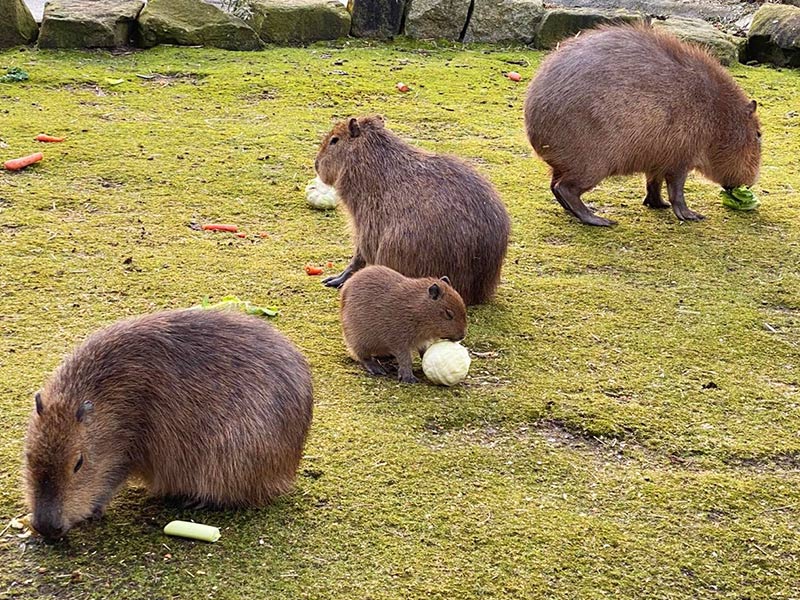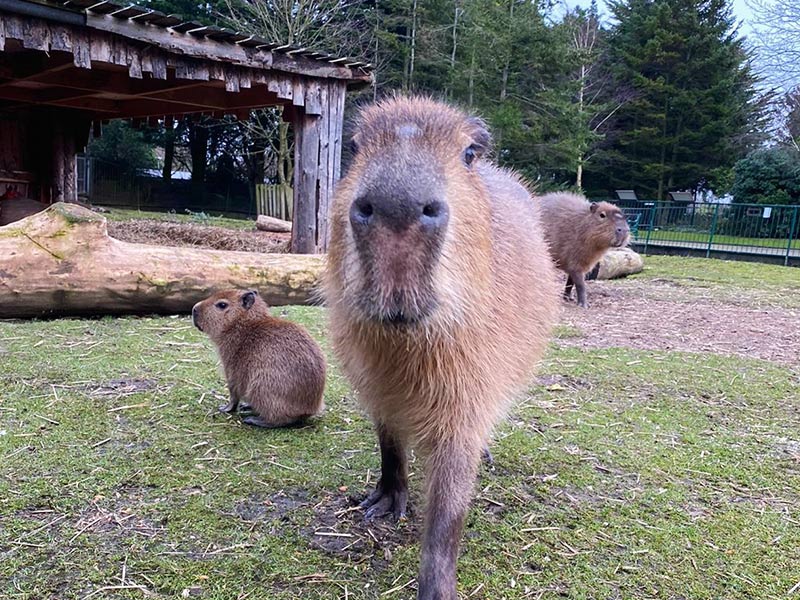Ends soon! Save 25% on Gold and Platinum memberships!


Capybara










Capybara are the largest rodents alive today and resemble giant guinea pigs, although they can, in fact, weigh as much as an adult human being. They live for about 8 – 10 years and are hunted in the wild for their meat and hide.
Groups of up to 30 capybara can be seen grazing together on grasses in their South American rainforest habitat. Up to eight babies can be born in a litter, but four is a more usual number. They communicate with a series of noises including barks, purrs, whistles and huffs depending whether they’re frightened, angry or just content.
In the wild, capybara eat grasses and plants, but in the Zoo are fed on fruit and vegetables as well as the grass in their enclosure. To maximise the nutrients in their food, capybara eat, poo and then eat the poo to get the very last bits of goodness in there!
Capybara love to swim and, to enable them to see, hear and breathe in the water, their eyes, ears and nose is situated on top of their head.
Get the best price!